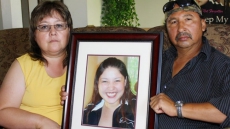MONTREAL — Latvian carrier airBaltic will be the first client to operate the CS300 aircraft when it takes delivery in the latter part of 2016, aircraft maker Bombardier announced Sunday.
The Latvian national airline has 13 firm orders for the CS300 and retains options for seven others, Bombardier said in a news release.
In a separate announcement, the Quebec-based company also said the flight test program for the CS100 aircraft was "close to 100 per cent complete."
The company said only "a few" tests remain and it expects the aircraft to be certified with Transport Canada by the end of the year as previously announced.
The testing is one of the last steps before the planes can be put into service.
"With our flight test program almost 100 per cent complete and all the high-risk CS100 aircraft's flight tests behind us, teams are now finalizing the last few certification activities," said CSeries program vice president Rob Dewar.
He said CSeries flight test vehicles took more than 1,000 flights during testing.
Bombardier also began function and reliability (F&R) testing on the CSeries with a four-leg flight by the CS100 Saturday. The F&R testing uses typical flight routes and operational procedures to see how the planes will perform under usual conditions.
"Airfield performance, landings, airport turnarounds and on-ground operations are just some of the important characteristics that will be observed during the F&R testing," Dewar said.
These test flights will be conducted in about 15 city pairs in Canada and 20 in the U.S. before taking place in Europe.
Bombardier Commercial Aircraft President Fred Cromer said the aircraft would be delivered to its client SWISS in the first half of 2016.
Recently, the Quebec government announced it would inject US$1 billion into Bombardier to help complete development of the CSeries and restore customer faith in the delayed and costly commercial jet program, which is about two years behind schedule.
The deal included plans to transfer the CSeries program to a new partnership that's 50.5 per cent owned by the company and 49.5 per cent owned by the province.




